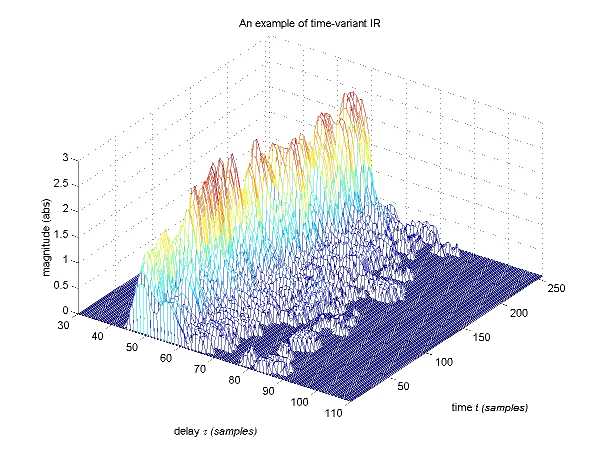
Introduction
The purpose of a communication system is to compensate the hostile effect of the channel between transmitter and receiver. In practice the communication channel is always time-variant. Thus, it is vitally important for a communications engineer to understand such channels to be able to design counter-measures for them. The goal of this laboratory exercise is to gain understanding of LTV system characterization and the constraints posed by such a system to communication receiver design.
In this laboratory work we investigate Linear Time-Variant (LTV) communication
channels, their system functions, and information that can be extracted
from those functions, such as coherence time, delay spread, Doppler spread.
Material
Material for
the lab work in pdf, 1.2 Mb. (Lab exercises updated slightly)
Hints
for the lab, in pdf.
Prerequisites
Literature
Some links
Teaser
Below you see a segment of a real-world time-variant impulse response
measured in Tapiola, Espoo. However, in this laboratory exercise we don't
drag ourselves to Tapiola with actual channel sounding equipment, but use
a hardware-based radio channel simulator instead (with 50 gigaFLOPS DSP
computing power, not your average desktop PC). Channel output is measured
with high speed A/D sampling boards, saved to a file and later processed
with MATLAB. Other high tech used in this lab includes: 100 Msps Arbitrary
Waveform Generator (AWG), spectrum analyzer, GSM tester.
Updated 16-09-2002/Lju